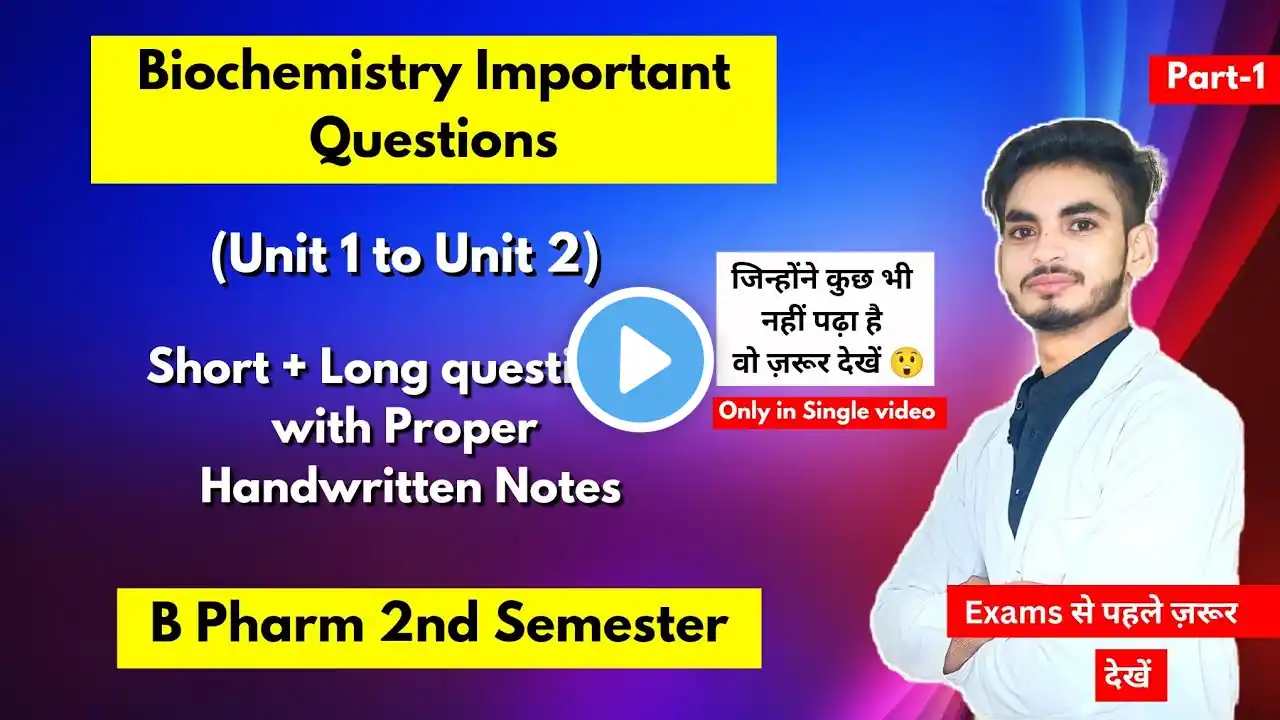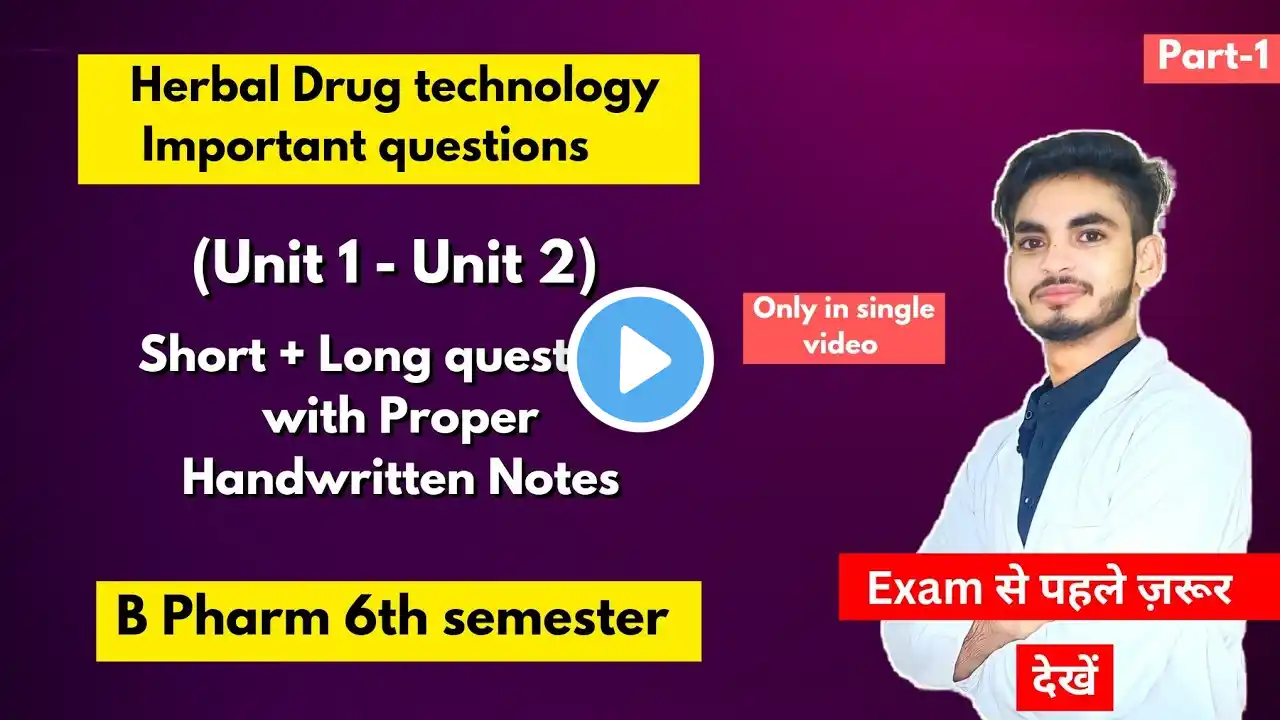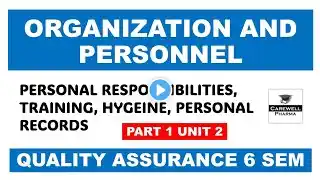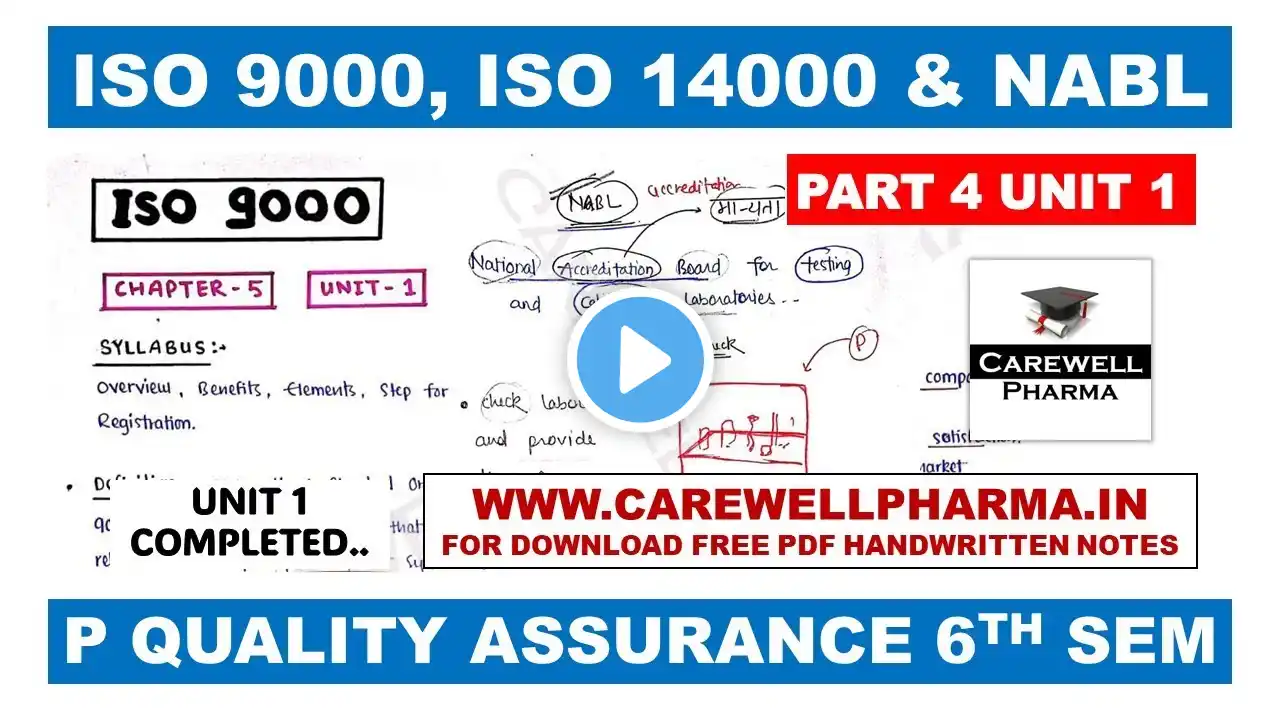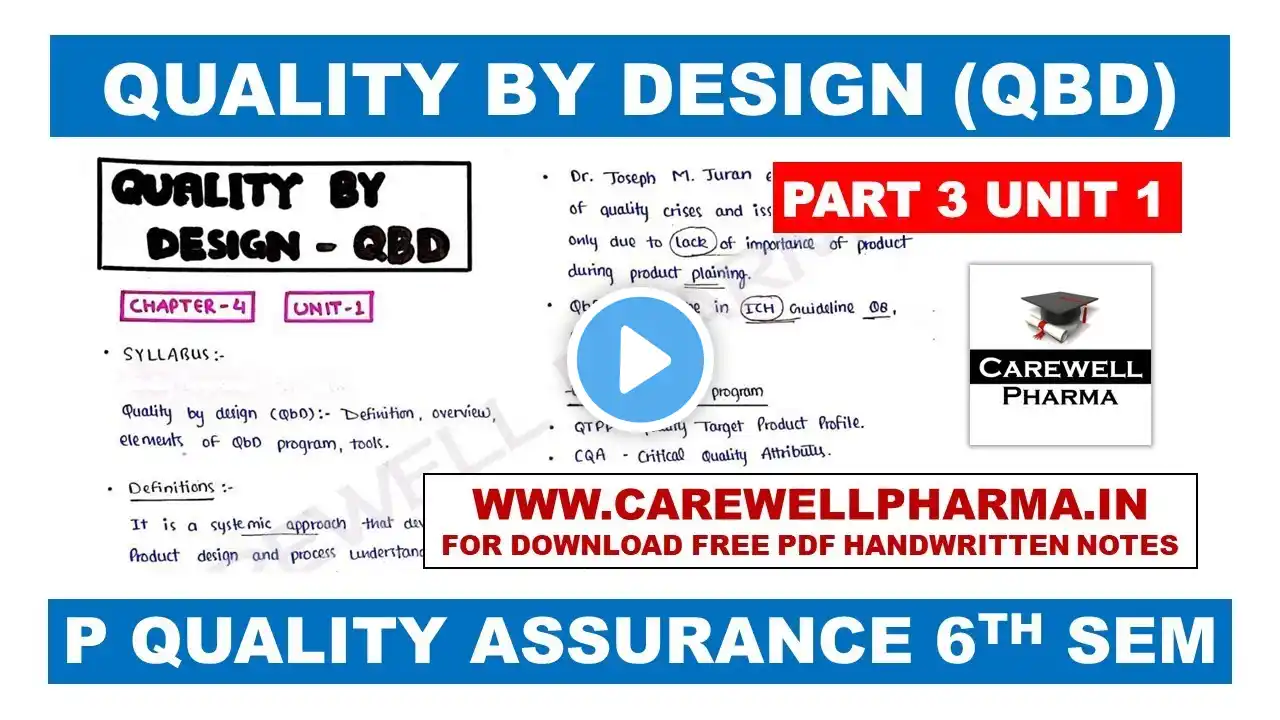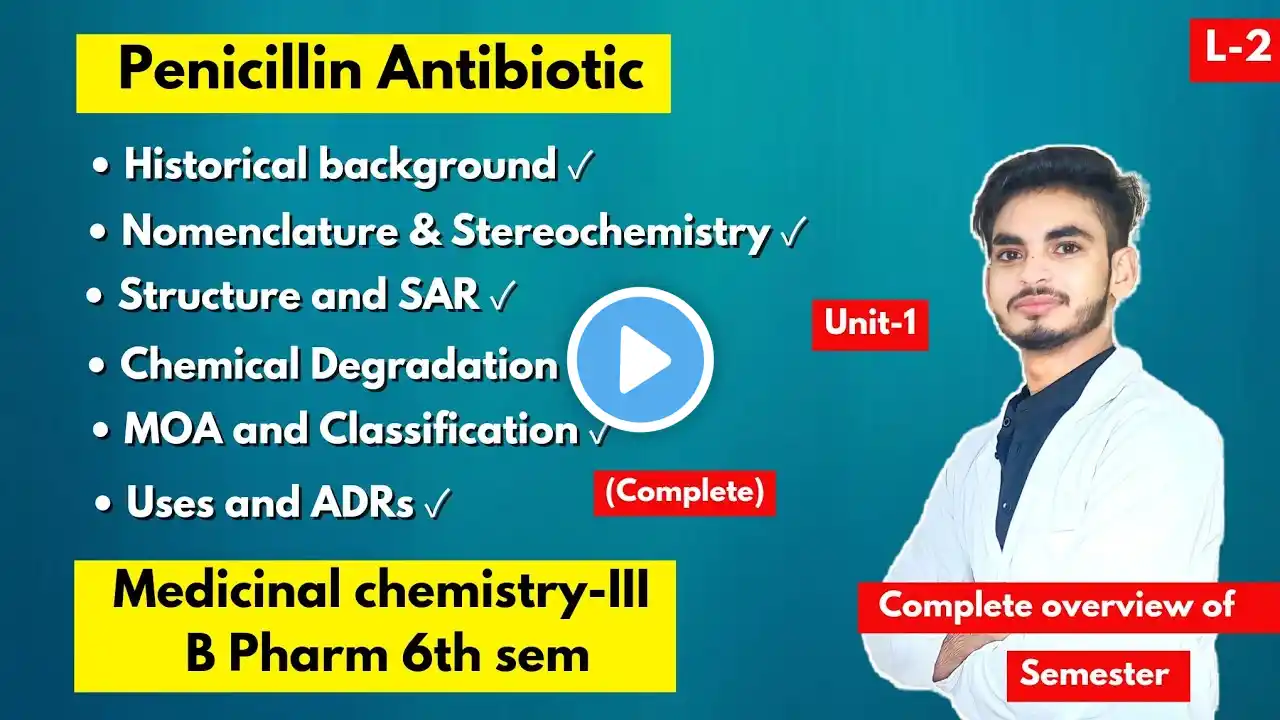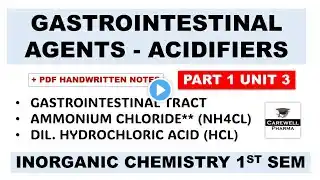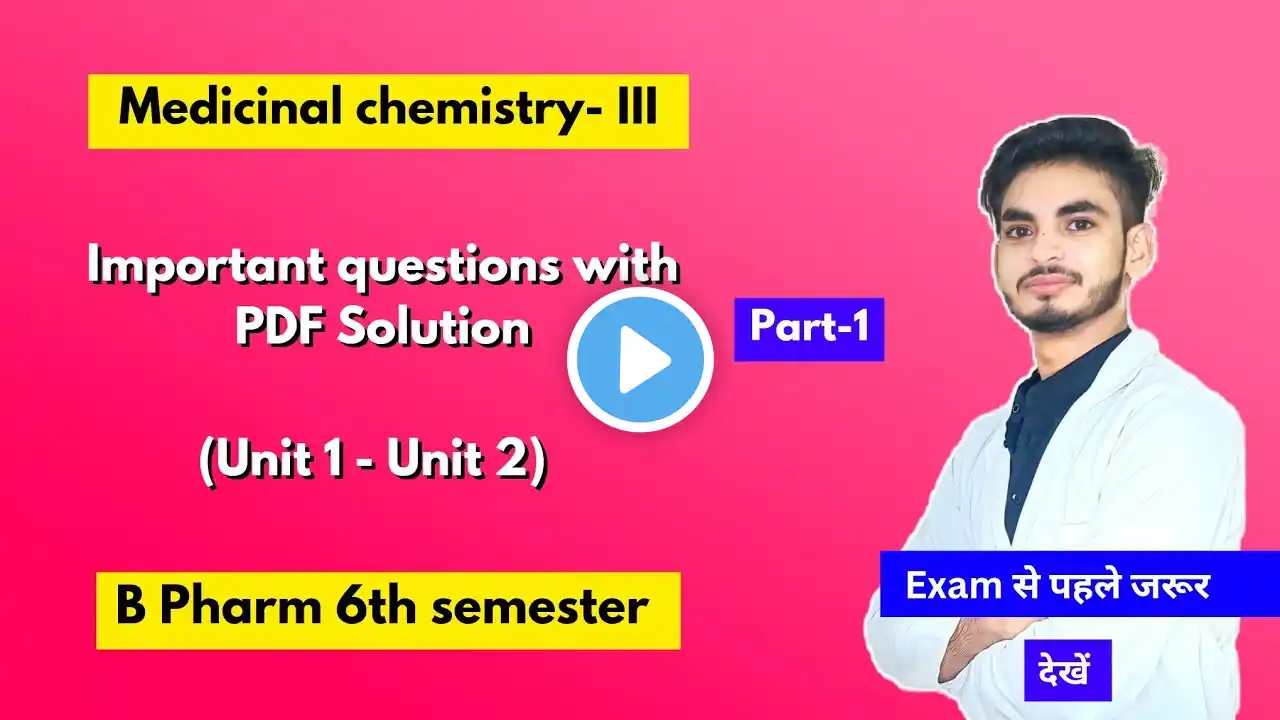
Part-1। Medicinal chemistry 6th semester important questions। B Pharm। Short & long Questions।
Hey! My name is Shahruddin Khan Today In this video I provide Medicinal chemistry B Pharm 6th semester important questions : Short & long questions with solution pdf. (Part-1) Download pdf notes📝 of this video 📸 👇 • Pharmacy wala App Download Problem..!! 💥 Watch Important questions of other subjects of B Pharm 6th semester 👇🔥 • B Pharm 6th semester Important questions Copyright disclaimer under section 107 of the copyright act 1976, allowance is made for ”fair use” for purposes such as critisism,comment ,news reporting , teaching,scholrship and research. Fair use is a use permitted by copyright statute that might otherwise be infringing. Non-profit, educational and personal use tips the balance in favor of fair use. Follow on Instagram:- (Personal) / shahruddinkhan921 Follow on Instagram:- (Channel) / pharmacy_wala / Like Facebook Page :- https://www.facebook.com/profile.php?... ___________________________________________ Join Telegram channel link 👇 •●◉✿Pharmacy wala✿◉●• It is official telegram account of Pharmacy wala channel (shahruddin khan) Join this. https://t.me/pharmacywala15M Join whatsapp group👇 https://chat.whatsapp.com/ElxPp2Dt1a6... ____________________________________________ #herbal #biotechnology #pharmacology #medicinalchemistry #pharmacognosy #pharmaceuticalbiotechnology #pharmaceutics #organicchemistry #importantquestions #bpharmacy #6thsemester #syllabus #importantquestions #exam Unit-I 10 Hours Antibiotics: Historical background, Nomenclature, Stereochemistry, Structure activity relationship, Chemical degradation classification and important products of the following classes. β-Lactam antibiotics: Penicillin, Cephalosporin, β-Lactamase inhibitors, Monobactams. Aminoglycosides: Streptomycin, Neomycin, Kanamycin. Tetracycline: Tetracycline, Oxytetracycline, Chlortetracycline, Minocycline, Doxycycline. Unit-II Antibiotics: Historical background, Nomenclature, Stereochemistry, Structure activity relationship, Chemical degradation classification and important products of the following classes. Macrolide: Erythromycin Clarithromycin, Azithromycin. Miscellaneous: Chloramphenicol*, Clindamycin. Prodrugs: Basic concepts and application of prodrugs design. Antimalarial: Etiology of malaria. Quinolines: SAR, Quinine sulphate, Chloroquine*, Amodiaquine, Primaquine phosphate, Pamaquine*, Quinacrine hydrochloride, Mefloquine. Biguanides and dihydro triazines: Cycloguanil pamoate, Proguanil. Miscellaneous: Pyrimethamine, Artesunate, Artemether, Atovaquone. Unit-III Anti-tubercular Agents: Synthetic anti tubercular agents: Isoniazid*, Ethionamide, Ethambutol, Pyrazinamide, Para amino salicylic acid.* Ant-tubercular antibiotics: Rifampicin, Rifabutin, Cycloserine, Streptomycin, Capreomycin sulphate. Urinary tract anti-infective agents: Quinolones: SAR of quinolones, Nalidixic Acid, Norfloxacin, Enoxacin, Ciprofloxacin*, Ofloxacin, Lomefloxacin, Sparfloxacin, Gatifloxacin, Moxifloxacin. Miscellaneous: Furazolidine, Nitrofurantoin*, Methanamine. Antiviral agents: Amantadine hydrochloride, Rimantadine hydrochloride, Idoxuridine trifluoride, Acyclovir*, Ganciclovir, Zidovudine, Didanosine, Zalcitabine, Lamivudine, Loviride, Delavirdine, Ribavirin, Saquinavir, Indinavir, Ritonavir. Unit-IV Antifungal agents: Antifungal antibiotics: Amphotericin-B, Nystatin, Natamycin, Griseofulvin. Synthetic Antifungal agents: Clotrimazole, Econazole, Butoconazole, Oxiconazole Tioconazole, Miconazole*, Ketoconazole, Terconazole, Itraconazole, Fluconazole, Naftifine hydrochloride, Tolnaftate.* Anti-protozoal Agents: Metronidazole*, Tinidazole, Ornidazole, Diloxanide, Iodoquinol, Pentamidine Isethionate, Atovaquone, Eflornithine. Anthelmintic: Diethylcarbamazine citrate*, Thiabendazole, Mebendazole*, Albendazole, Niclosamide, Oxamniquine, Praziquantel, Ivermectin. Sulphonamides and Sulfones: Historical development, chemistry, classification and SAR of Sulfonamides: Sulphamethizole, Sulfisoxazole, Sulphamethizine, Sulfacetamide*, Sulphapyridine, Sulfamethoxazole*, Sulphadiazine, Mefenide acetate, Sulfasalazine. Folate reductase inhibitors: Trimethoprim*, Cotrimoxazole. Sulfones: Dapsone*. Unit-V Introduction to Drug Design Various approaches used in drug design. Physicochemical parameters used in quantitative structure activity relationship (QSAR) such as partition coefficient, Hammett’s electronic parameter, Taft’s steric parameter and Hansch analysis. Pharmacophore modeling and docking techniques. Combinatorial Chemistry: Concept and applications of combinatorial Chemistry: Solid phase and solution phase synthesis.



